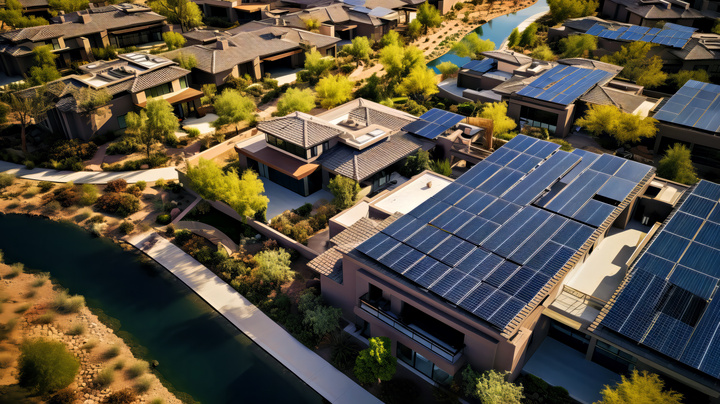
As many Americans have regrettably come to realize, the nation’s energy grid is facing a major reliability crisis. Between the growing frequency of extreme weather events, a rising demand for electricity, and aging grid infrastructure, power outages are now rife throughout the U.S., costing up to $170 billion per year.
To combat growing grid instability and the significant costs it imposes, innovative distributed energy mechanisms are being deployed across the country. Virtual power plants (VPPs) are among the most effective, with the ability to empower energy users while enhancing regional energy security.
What is a Virtual Power Plant?
VPPs are collections of small energy-producing, consuming, and storage technologies (e.g. home solar, EV chargers, smart HVAC systems, battery storage, etc) that are pooled together to offer flexible, on-demand grid support. With participants’ approval, VPPs let consumers and businesses dispatch electricity into the grid, helping offset periods of limited supply. Although relatively nascent, VPPs are already experiencing significant growth, and are on track to reduce U.S. peak demand by as much as 60 gigawatts by 2030 — enough to power 50 million homes.
Virtual Power Plants Are Good For the Grid, Ratepayers, and the Environment
VPPs yield a range of benefits, most notably mitigating the instability that’s come to define the U.S. grid. At the same time, they assist in keeping electricity bills affordable by enabling the deferral of transmission, distribution, and generation infrastructure upgrades — costs that otherwise get passed down to ratepayers. Wholesale energy costs, which are felt across all sectors of the economy, can also be minimized through the use of VPPs, with electrical generation able to be shifted away from high-cost resources toward more efficient renewables.
If scaled nationwide, VPPs could even provide enough dispatchable power to support the decommissioning of peaker plants — inefficient fossil fuel-burning facilities that are activated during periods of intense grid stress. As peaker plants have to be ready to kick into gear at a moment’s notice, they’re massively expensive to maintain, ultimately raising electricity costs. Replacing peaker plants with VPPs that utilize existing energy resources would not only reduce pollution but also translate into major ratepayer savings.
The Tricky Part (For Now)… Enrollment
The lack of accessible VPPs remains a significant obstacle to tackling grid instability. As it stands, ratepayers situated beyond the boundaries of existing programs must simply wait until one is made available in their area. Though frustrating, this problem is likely to be resolved in a few short years as collaborative initiatives like Rocky Mountain Institutes’ VP3 — a virtual power plant industry partnership — work to establish friendly policy and regulatory frameworks across the country.
Still, depending on location, consumers and businesses can sign up with participating electricity retailers, municipalities, and cooperative utilities. Where programs have been introduced, they’ve quickly hit capacity, demonstrating a high level of interest in VPPs.
Sunrun and Pacific Gas & Electric (PG&E), one of the country’s largest residential solar companies and electric and natural gas utilities, respectively, recently developed a VPP serving North and Central California. Consisting of 8,500 participants, the VPP can dispatch up to 34 MW of on-demand solar and storage and serves as a blueprint for future industry collaborations.
An efficient means of mitigating grid stress, high electricity prices, and carbon emissions, VPPs are set to play a significant role in the future of the U.S. electrical system. VPPs are a testament to the power of energy decentralization and possess boundless potential — now, we just need to act on it.